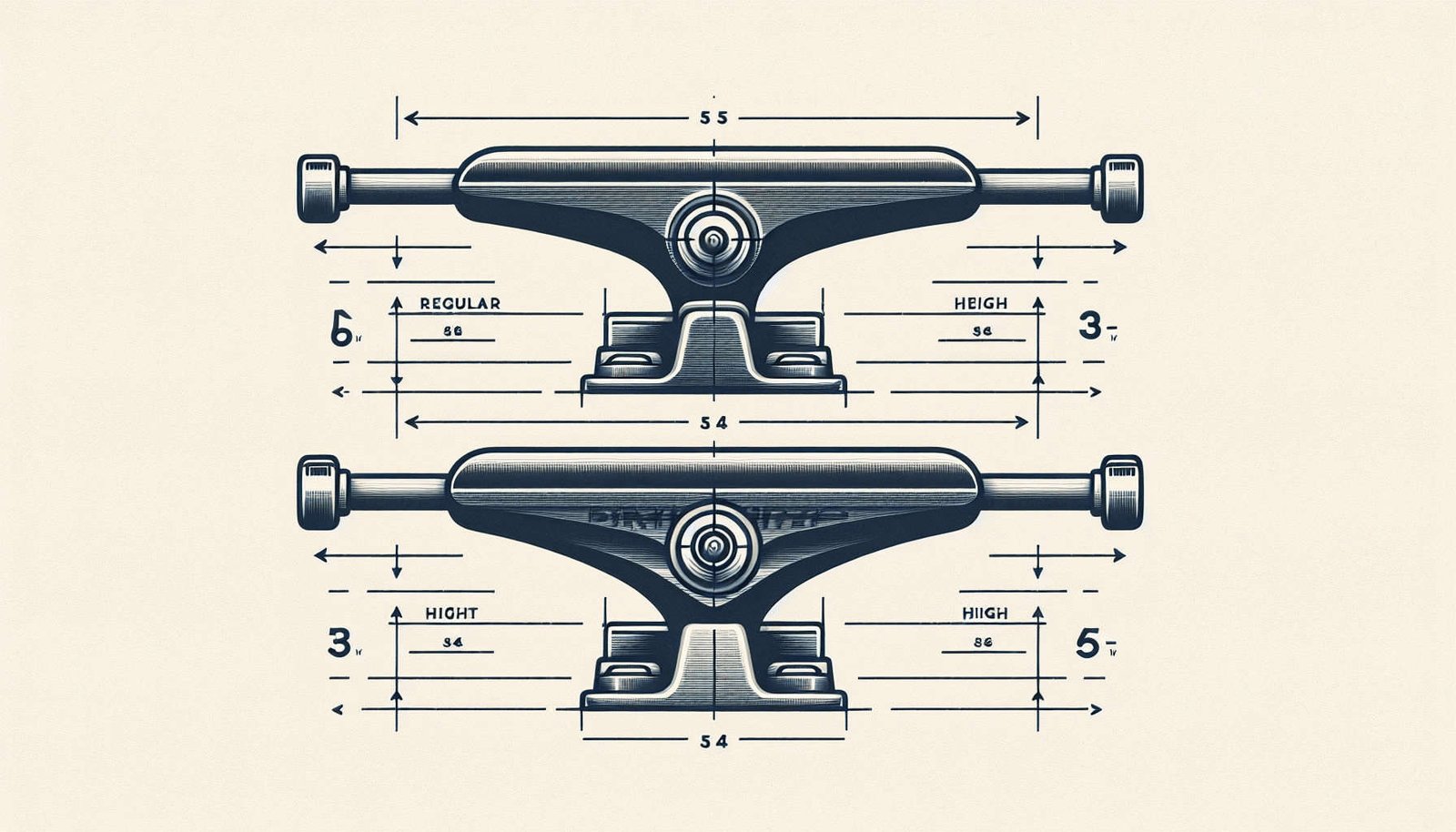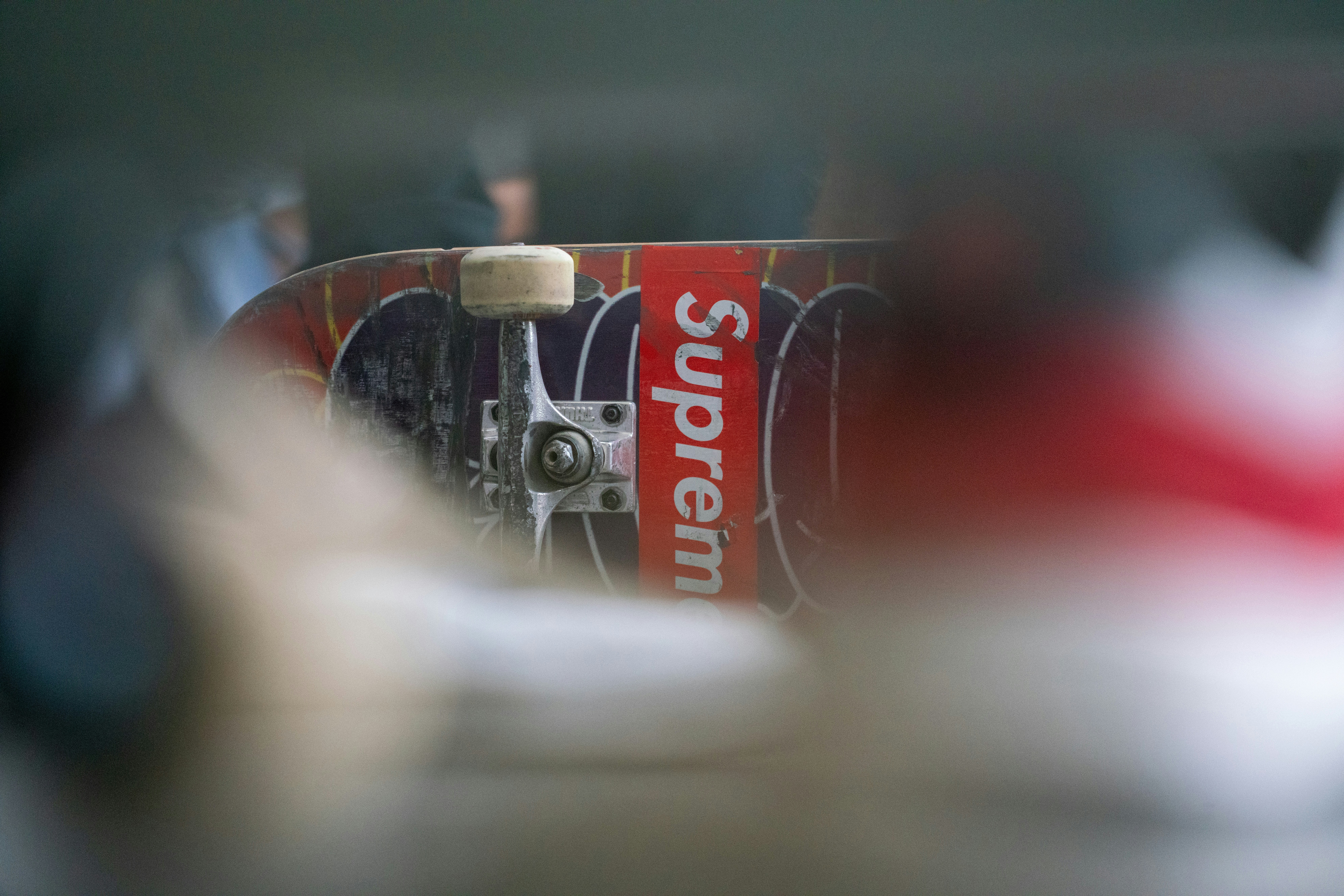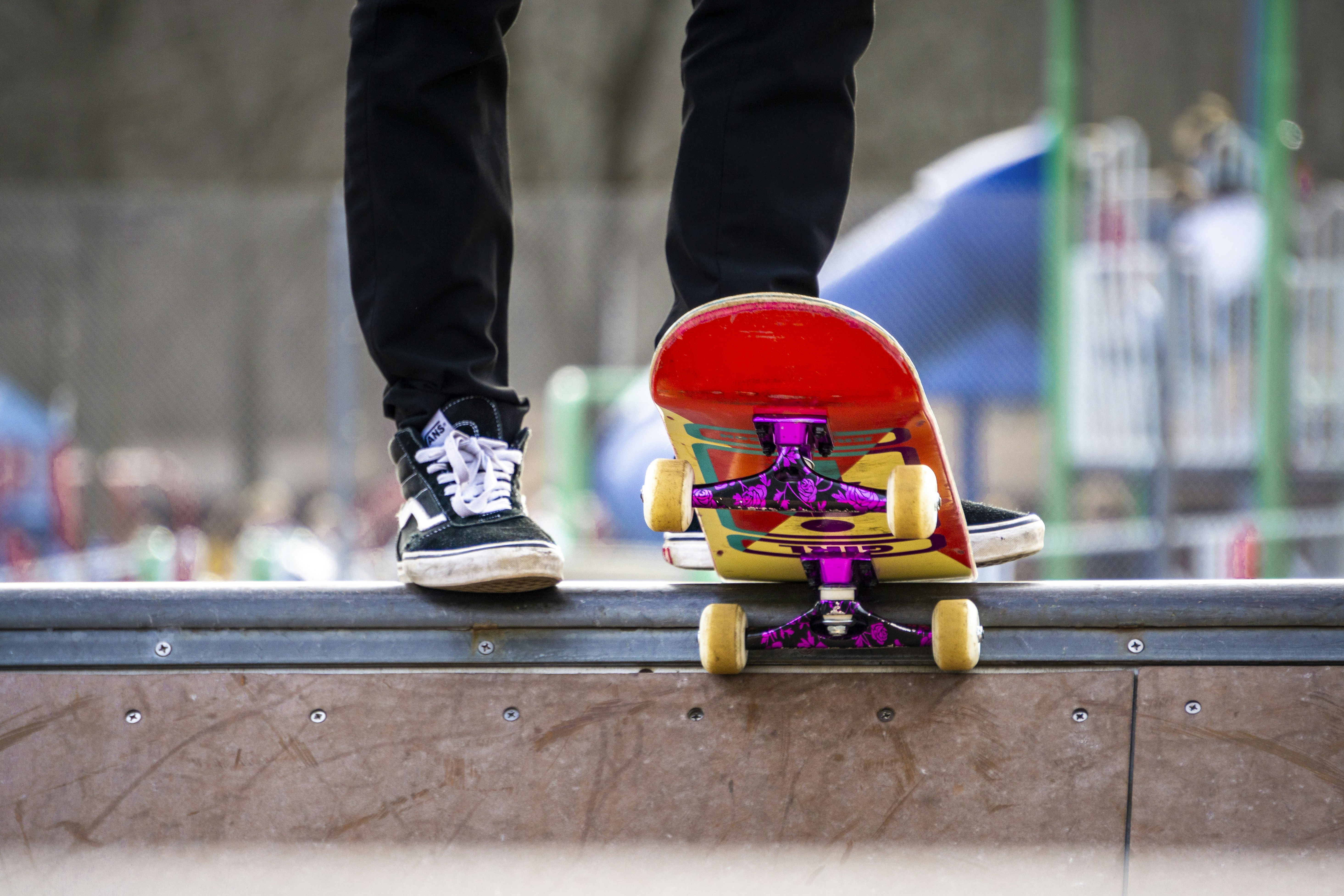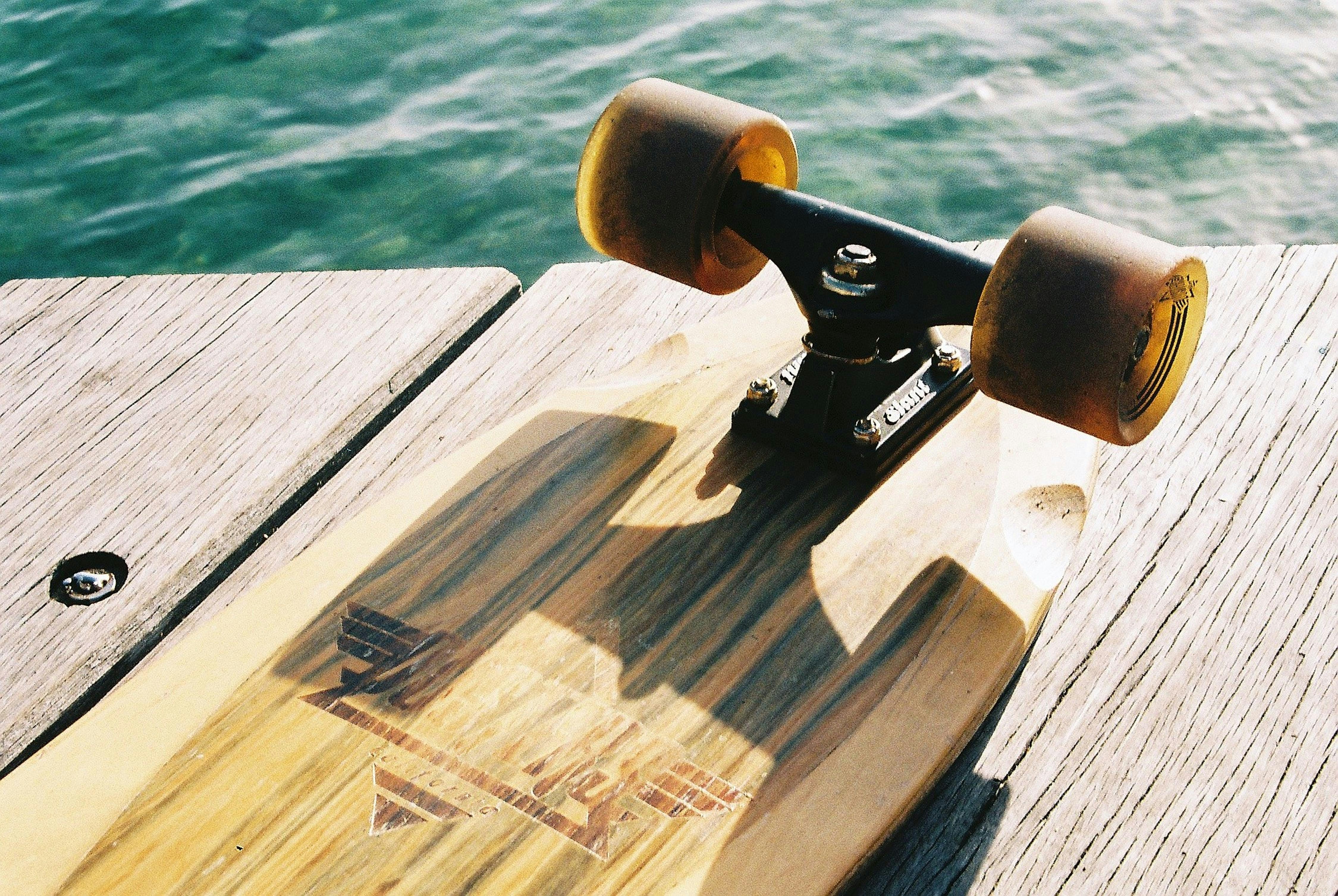Have you ever wondered what sets regular trucks apart from high trucks when it comes to skateboards? Well, look no further because this article will shed some light on this topic. Regular trucks and high trucks each have their own unique features and advantages that cater to different styles of skateboarding. Understanding this difference can help you choose the right trucks for your skating needs and enhance your overall performance on your board. So, let’s dive in and explore the disparities between regular trucks and high trucks for skateboards!
Overview
Skateboarding is a thrilling and dynamic sport that requires the right equipment for optimal performance. One crucial component of a skateboard is the truck, which plays a significant role in the rider’s overall experience. In this article, we will explore the key differences between regular trucks and high trucks, explaining their definitions, highlighting their importance in skateboarding, and discussing various factors to consider when choosing the right truck for your skateboard.
Definition of Regular Trucks
Regular trucks, or low trucks, refer to skateboard trucks with a lower profile and a standard height. These trucks generally sit closer to the ground, offering a lower center of gravity. The primary purpose of regular trucks is to provide stability and control, making them well-suited for street skateboarding and technical tricks.
Definition of High Trucks
High trucks, as their name suggests, are skateboard trucks with an elevated height compared to regular trucks. They are designed to provide additional clearance between the skateboard deck and the ground. High trucks are favored by skateboarders who enjoy vertical skateboarding and those who prioritize the ability to carve and make turns with ease.
Importance of Trucks in Skateboarding
Trucks are a critical component of a skateboard, serving as the connection between the deck and the wheels. They affect the skateboard’s performance in several ways, including stability, maneuverability, and grinding potential. Choosing the right truck type is essential as it can greatly impact the rider’s overall experience and ability to execute tricks effectively.
Purpose of the Article
The purpose of this article is to help you understand the differences between regular trucks and high trucks so that you can make an informed decision when selecting the appropriate truck for your skateboarding needs. By exploring the design and structure, ride and performance, terrain and skateboarding style, pros and cons, and other factors, you will gain valuable insights into which type of truck aligns best with your skill level, style, and preferences.
Design and Structure
The design and structure of skateboard trucks play a significant role in determining how they perform on the board. Understanding the various aspects that contribute to their design and structure will help you make an informed decision when choosing between regular trucks and high trucks.
Height and Size
The height and size of skateboard trucks are crucial factors to consider. Regular trucks are typically lower, providing a stable platform closer to the ground. High trucks, on the other hand, offer more clearance, allowing for a greater range of motion and the ability to ride larger wheels.
Axle Width
Axle width refers to the distance between the two axles of a skateboard truck. It directly affects the stability and maneuverability of the skateboard. Regular trucks often have a narrower axle width, which provides quick turns and enhanced maneuverability, while high trucks tend to have a wider axle width, offering more stability and control.
Kingpin Angle
The kingpin angle is the angle at which the bolt holding the skateboard trucks together is positioned. It influences the truck’s responsiveness and turning ability. Regular trucks commonly have a standard kingpin angle, allowing for sharp turns and nimble handling. High trucks, however, may have a more relaxed kingpin angle, providing smoother and more controlled turns.
Bushings
Bushings are small rubber or urethane components located in the skateboard truck’s hanger. They contribute to the truck’s responsiveness and ability to absorb shock. Regular trucks typically feature harder bushings, offering stability for precise maneuvers. High trucks may come with softer bushings, allowing for greater flexibility and smoother turns.
Hanger Shape
The hanger shape of skateboard trucks affects their performance on various terrains. Regular trucks usually have a traditional hanger shape, which provides stability and control suitable for street skateboarding and technical tricks. High trucks might feature a more tapered hanger shape, allowing for better carving and maneuverability on ramps and transitions.
Weight
The weight of skateboard trucks can significantly impact the skateboard’s overall weight and maneuverability. Regular trucks tend to be lighter due to their lower profile, offering a more responsive and agile ride. High trucks may be slightly heavier due to their increased height, which can affect maneuverability but can also provide stability for certain skateboarding styles.
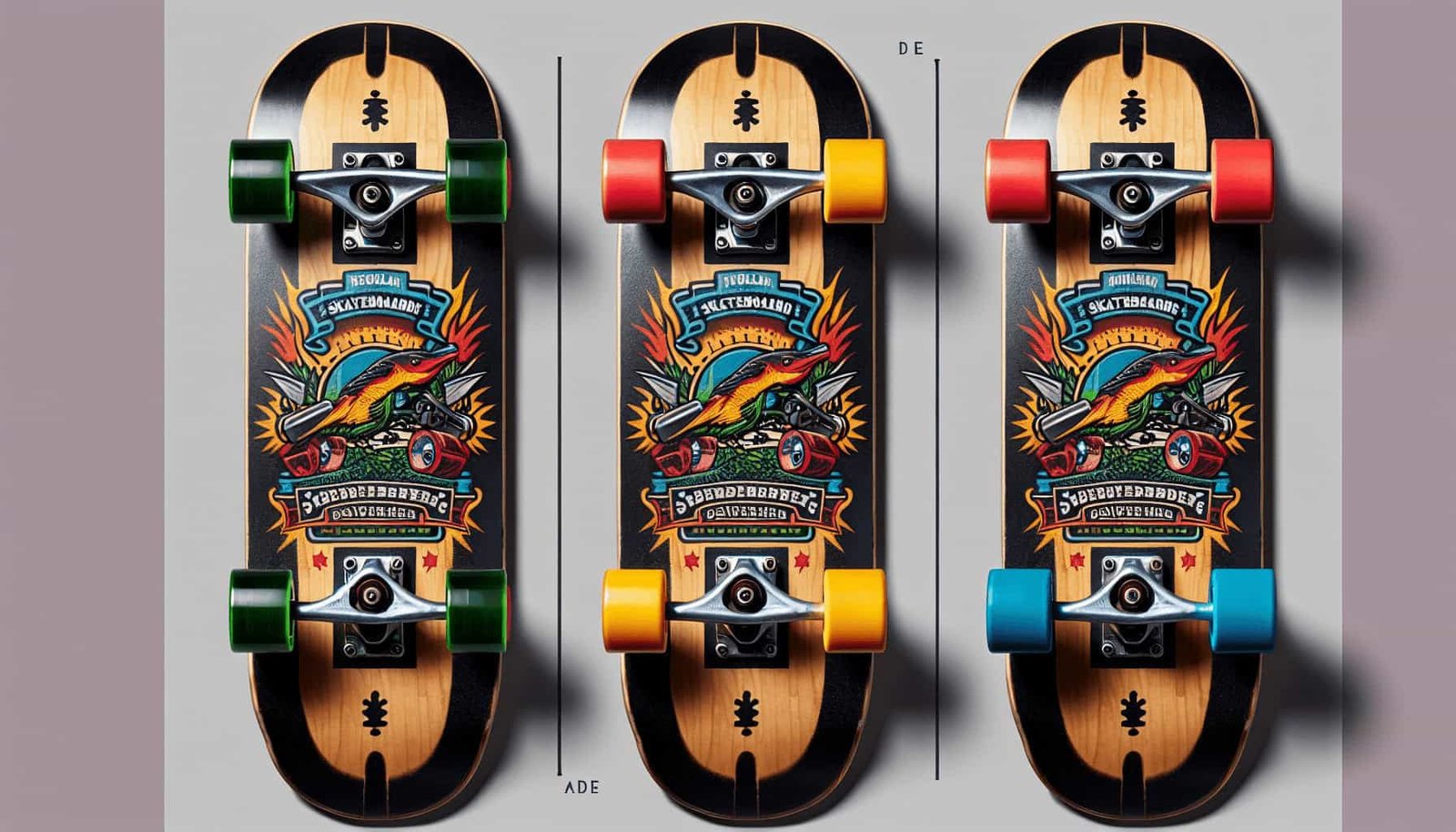
Ride and Performance
The ride and performance of a skateboard greatly rely on the type of trucks used. Regular trucks and high trucks offer distinct characteristics in terms of stability, maneuverability, grinding potential, turn radius, impact on tricks, and compatibility with different skateboarding styles.
Stability
Regular trucks excel in providing stability, especially at higher speeds or during technical maneuvers. Their lower profile and center of gravity contribute to a solid base, making it easier to maintain balance and control. High trucks, while offering less stability due to their elevated height, provide added clearance that can be advantageous for certain skateboarding styles.
Maneuverability
Maneuverability is a crucial factor for skateboarders who prioritize quick turns and nimble handling. Regular trucks are particularly well-suited for sharp, quick turns, thanks to their narrower axle width and standard kingpin angle. High trucks, with their wider axle width and potential relaxed kingpin angle, may sacrifice some maneuverability but offer improved control and smoother turns.
Grinding Potential
Grinding is a fundamental skateboarding trick that involves sliding on rails or curbs with the skateboard trucks. The grinding potential of trucks is primarily determined by their hanger shape and the materials used for their construction. Regular trucks, with their traditional hanger shape and often harder materials, are typically favored for grinding. High trucks can also be used for grinding but may require adjustments to compensate for their elevated height.
Turn Radius
The turn radius of skateboard trucks refers to the diameter of the circle they can produce when turning. Regular trucks, with their narrower axle width and standard kingpin angle, offer a smaller turn radius, allowing for tight and precise turns. High trucks, with their wider axle width and potentially relaxed kingpin angle, tend to have a larger turn radius, providing smoother and broader turns.
Impact on Tricks
The type of truck used can significantly impact the execution and performance of tricks. Regular trucks, with their lower profile and stable nature, are well-suited for street skateboarding and technical tricks that require controlled movements. High trucks, with their added clearance and potential for smoother turns, are favored by skateboarders who focus on carving and transitions.
Compatibility with Skateboard Style
Different skateboarding styles require specific characteristics from the trucks. Regular trucks are commonly preferred for street skateboarding, as they offer stability, control, and the ability to perform technical tricks. High trucks are often favored for vertical skateboarding, such as ramp and pool riding, as they enable better carving and tighter turns.
Terrain and Skateboarding Style
Skateboarding terrain and personal skateboarding style play a vital role in determining which type of truck is more suitable. Understanding how regular trucks and high trucks perform on different terrains will help you make an informed decision.
Street Skateboarding
Street skateboarding involves performing tricks on urban landscapes, such as staircases, ledges, and rails. Regular trucks are highly recommended for street skateboarding due to their stability, low profile, and ability to handle technical maneuvers effectively. Their responsiveness allows for quick, precise turns, making it easier to navigate through tight spots and execute tricks flawlessly.
Vert Skateboarding
Vert skateboarding focuses on riding ramps, halfpipes, and other vertical structures. High trucks are particularly well-suited for this type of skateboarding as they provide the additional clearance necessary for carving and performing aerial tricks. Their ability to make smooth turns and absorb impact makes high trucks an ideal choice for vert skateboarding enthusiasts.
Cruising and Transportation
For those who primarily use skateboards for cruising around town or transportation purposes, regular trucks are generally more suitable. Their stability, control, and responsiveness make them ideal for navigating various surfaces and maintaining balance during longer rides. However, personal preference and comfort should also be taken into account when choosing the right trucks for cruising.
Downhill and Speed
Downhill skateboarding and speed enthusiasts require trucks that can handle high speeds and provide stability. Regular trucks, with their lower profile and stability, offer better control at higher speeds, making them a popular choice for downhill skateboarding. However, high trucks can also be used for downhill skateboarding, as their elevated height may provide added stability depending on the rider’s preference and style.
Pros and Cons
Understanding the pros and cons of regular trucks and high trucks will help you weigh the advantages and disadvantages of each type when deciding which one suits your skateboarding needs best.
Regular Truck Pros
- Stability: Regular trucks offer a stable ride due to their lower center of gravity.
- Control: Their responsiveness allows for precise maneuvers and quick turns.
- Grinding Potential: Regular trucks are often preferred for grinding due to their hanger shape and materials used.
- Compatibility: Regular trucks excel in street skateboarding and technical tricks.
Regular Truck Cons
- Limited Clearance: The lower profile of regular trucks may limit the size of wheels that can be used.
- Less Carving Ability: Regular trucks may sacrifice some carving ability due to their narrower axle width.
High Truck Pros
- Additional Clearance: High trucks provide more clearance, allowing for larger wheels and increased maneuverability.
- Enhanced Carving: The elevated height of high trucks enables better carving and smoother turns.
- Transition Performance: High trucks are well-suited for vertical skateboarding and transitions.
High Truck Cons
- Reduced Stability: Due to their elevated height, high trucks offer less stability compared to regular trucks.
- Compatibility Limitations: High trucks may not perform as well for street skateboarding or technical tricks.
Choosing the Right Truck
Choosing the right truck is a personal decision that depends on various factors. Consider the following when making your selection:
Skill Level and Experience
Beginners may find regular trucks more suitable due to their stability and control. As you gain experience and become more comfortable on a skateboard, you may choose to transition to high trucks if your skateboarding style demands it.
Skateboarding Style
Different skateboarding styles require specific characteristics from trucks. Consider the type of skateboarding you enjoy and the tricks you wish to perform. Regular trucks are recommended for street skateboarding, while high trucks are favored for vert skateboarding.
Terrain Preference
The type of terrain you frequently skate on should factor into your decision. Regular trucks excel on urban landscapes, while high trucks are better suited for skatepark ramps and transitions. Consider your primary skateboarding environment before making a choice.
Personal Preference
Ultimately, personal preference plays a significant role in choosing the right truck. Some skateboarders simply prefer the feel of regular trucks, while others enjoy the added clearance and carving ability of high trucks. Experimentation and trying out different types of trucks can help you determine your preferred style.
Experimenting and Customization
Skateboarding is all about individuality and personal expression. Feel free to experiment with different truck types, sizes, and other customization options. It’s through experimentation that you will discover what works best for your unique riding style and preferences.
Conclusion
Regular trucks and high trucks each have their own unique characteristics and advantages. The decision between the two ultimately depends on your skill level, skateboarding style, terrain preference, and personal preferences. Regular trucks offer stability, control, and excel in street skateboarding, while high trucks provide additional clearance, enhanced carving ability, and better performance on ramps and transitions. By considering various factors such as design, ride and performance, terrain and skateboarding style, and pros and cons, you can confidently choose the right truck that will elevate your skateboarding experience.
FAQs
Which truck type is better for beginners?
For beginners, regular trucks are generally recommended due to their stability and control. Regular trucks provide a solid foundation for learning basic skateboard tricks and techniques.
Can I use regular trucks for high trucks tricks?
While regular trucks can be used for high trucks tricks, it may require additional adjustments. The lower profile of regular trucks may limit clearance and affect performance when attempting more advanced tricks typically associated with high trucks.
Can I use high trucks for regular street skateboarding?
High trucks can be used for regular street skateboarding; however, they may not be as well-suited for technical tricks that require precise maneuvers. The elevated height of high trucks may also impact stability when performing certain street skateboarding maneuvers.
Are high trucks more expensive than regular trucks?
The cost of trucks can vary depending on the brand, materials used, and other factors. Generally, high trucks may be slightly more expensive due to their additional features and functionality. However, there is a range of products available at different price points for both regular and high trucks.
Expert Opinions
Professional Skateboarder Perspectives
Professional skateboarders often have preferences based on their individual riding style and personal experiences. Their perspectives on regular trucks and high trucks can provide valuable insights into the trucks’ performance capabilities and suitability for different skateboarding styles.
Industry Experts’ Insights
Industry experts, such as skateboard designers, engineers, and manufacturers, possess a wealth of knowledge about the technical aspects and innovations in skateboard trucks. Consulting their insights can help you understand the intricacies of regular and high trucks, enabling you to make an informed decision based on expert advice.
Additional Resources
Skateboarding Gear Guides
Various skateboarding gear guides are available online and in print, providing in-depth information on skateboard trucks, decks, wheels, and other essential equipment. These resources can help you further explore the world of skateboard trucks and make informed decisions when purchasing new gear.
Online Skateboarding Communities
Engaging with online skateboarding communities, such as forums, social media groups, and platforms, can provide valuable insights and recommendations from fellow skateboarders. Networking with experienced riders can help you gain firsthand knowledge about the differences between regular trucks and high trucks.
Skateboarding Magazines and Websites
Skateboarding magazines and websites often feature articles, reviews, and interviews with industry professionals discussing various aspects of skateboarding, including trucks. Subscribing to these publications or visiting reputable websites can provide a wealth of information about skateboarding gear and related topics.
With a solid understanding of the differences between regular trucks and high trucks, you are now equipped to make an informed decision about which truck type best suits your specific skateboarding needs. By considering factors such as design and structure, ride and performance, terrain and skateboarding style, pros and cons, and personal preferences, you can confidently choose the right truck that will enhance your skateboarding experience. Remember to experiment, seek expert advice, and take advantage of additional resources to further refine your understanding of skateboard trucks and ultimately find the perfect fit for your riding style. Happy skateboarding!

